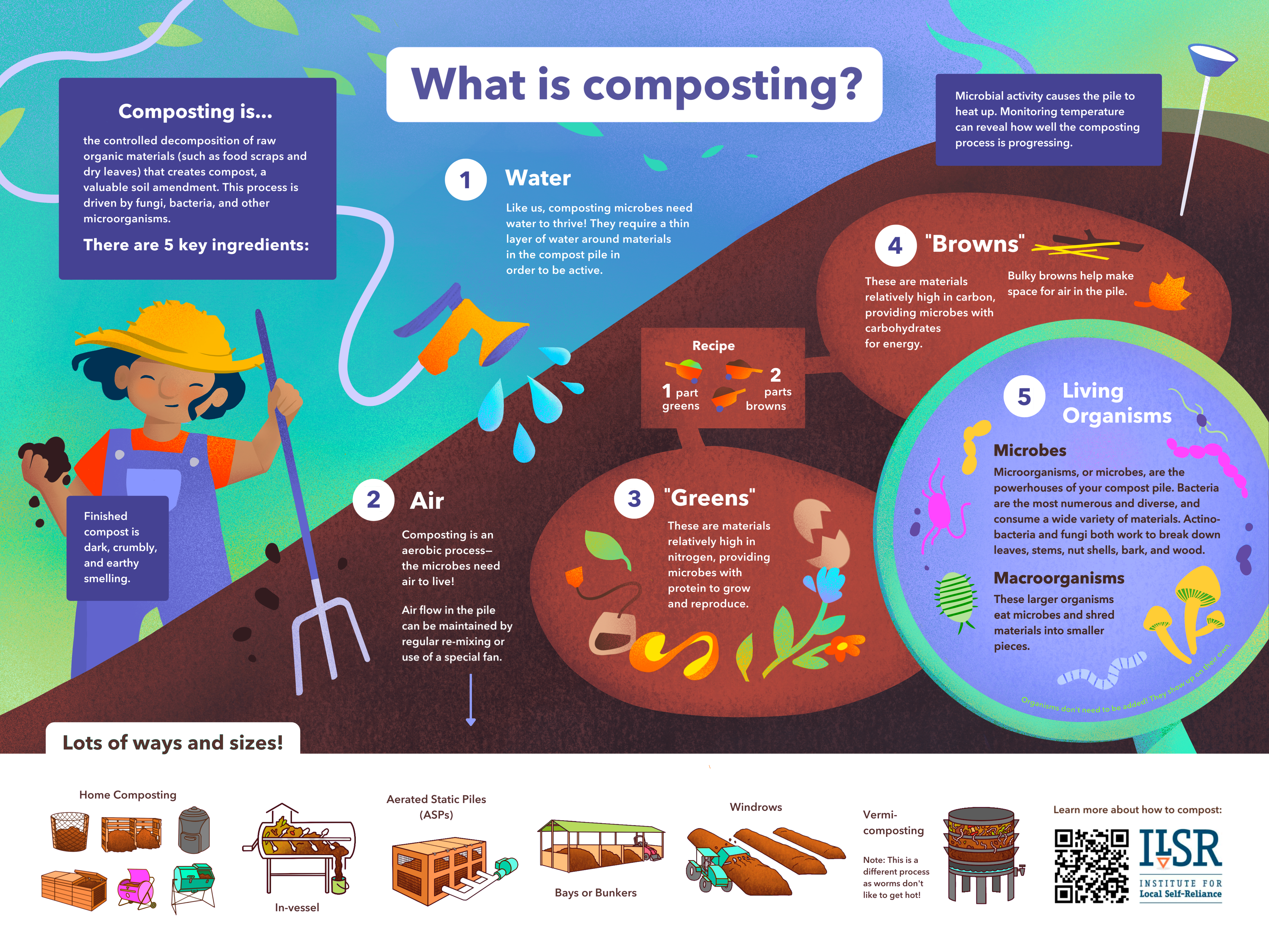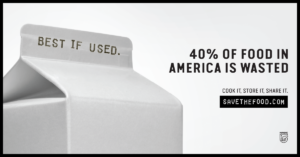
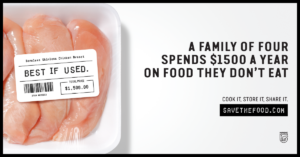
Food is wasted at an alarming rate in the U.S and with it go wasted resources such as water, land, crops, energy, labor and fuel.
In 2019, Connecticut alone generated 653 thousand tons of food waste!
E.P.A released the new “Waste Food Scale" in the fall of 2023. The Wasted Food Scale prioritizes actions that prevent and divert wasted food from disposal.
We all have the ability to DO ONE THING and change the course of food waste in our own homes.
Take a look at these actionable steps to:
- Help reduce food waste
- Rescue food
- Recycle food scraps
- Watch our webinar “The Solvable Problem of Food Waste: How We Can Help Our Environment and the Community" featuring Betsy and Jesse Fink – Founders of Millstone Farm and ReFED, and Warren Adams – ReFED
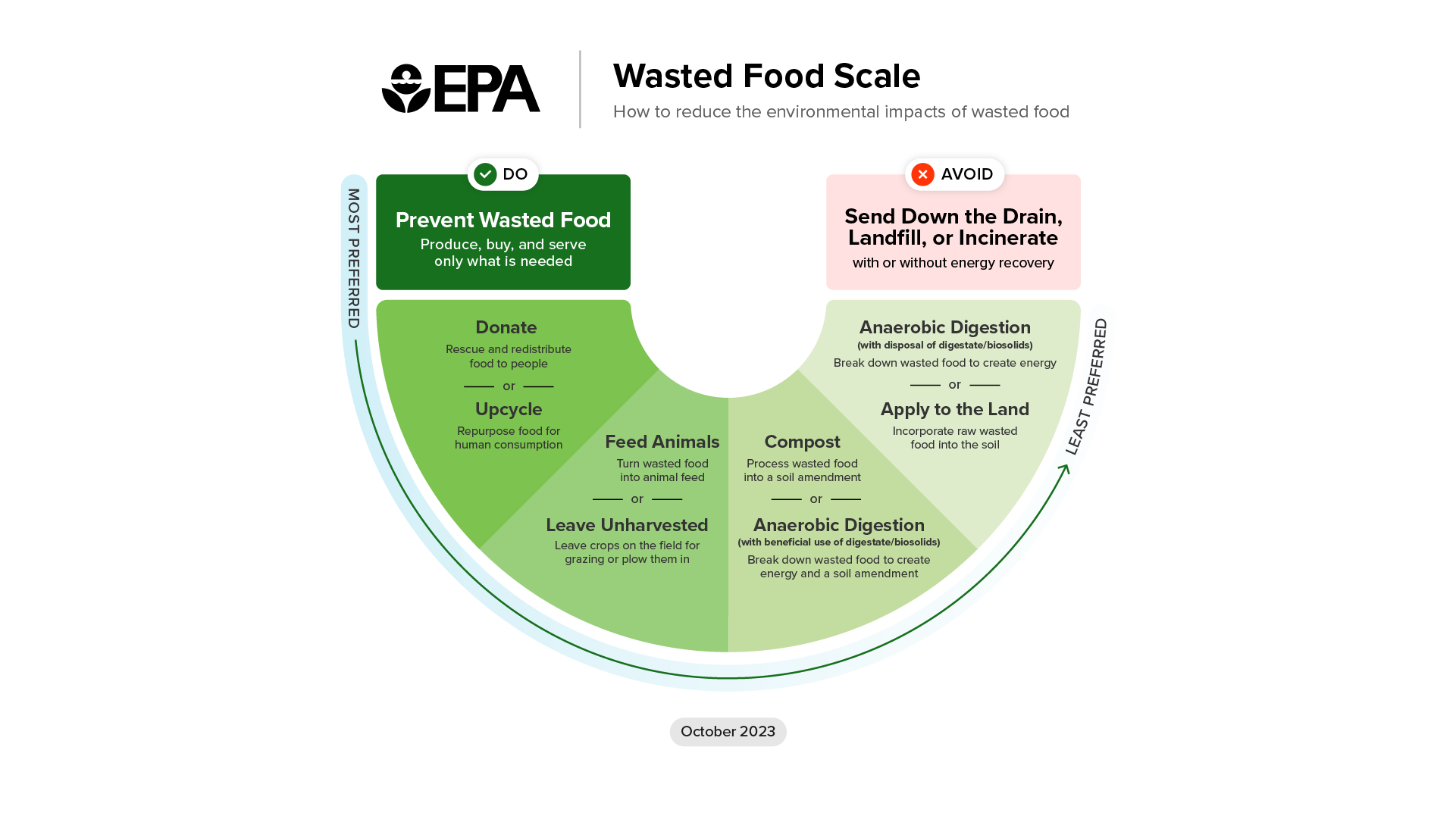
TIPS TO FIGHT FOOD WASTE
*Courtesy of partner Save The Food
MEAL PLAN – Plan two or three meals before shopping and use a list when at the store. Plan to eat the most perishable items early in the week and consider recipes that use ingredients you might have left over. Then plan in a couple of “lazy nights” for the week to order out, dine with friends, or use what’s in your freezer.*
LEARN HOW TO STORE FOOD PROPERLY – Prep produce for next couple days as soon as you bring it home, for easy use during the week. Use airtight containers for most foods. Click for additional storage advice for over 85 foods.*
LEFTOVER NIGHT – Designate one night a week to use up what's in your fridge.*
LEARN TO FREEZE FOODS – Freezing food is like pushing the pause button and almost anything can be frozen—bread (best sliced), milk (shake when thawed), eggs (raw but scrambled), and cheese (shredded and used for cooking). And don’t forget to freeze leftovers, even if just for a few days.* *
UNDERSTAND EXPIRATION DATES – “Use by,” “Best by,” “Enjoy by”—these are generally not expiration dates at all, but merely suggestions as to when the product is at its freshest. Use your senses! *
SHOP YOUR PANTRY – Before heading to the grocery store and while meal planning take a look at what you already have on hand at home. See how you can incorporate those items into your meals
ASK FOR SECONDS – When serving meals to your family or friends serve smaller portions and encourage them to go back for seconds.
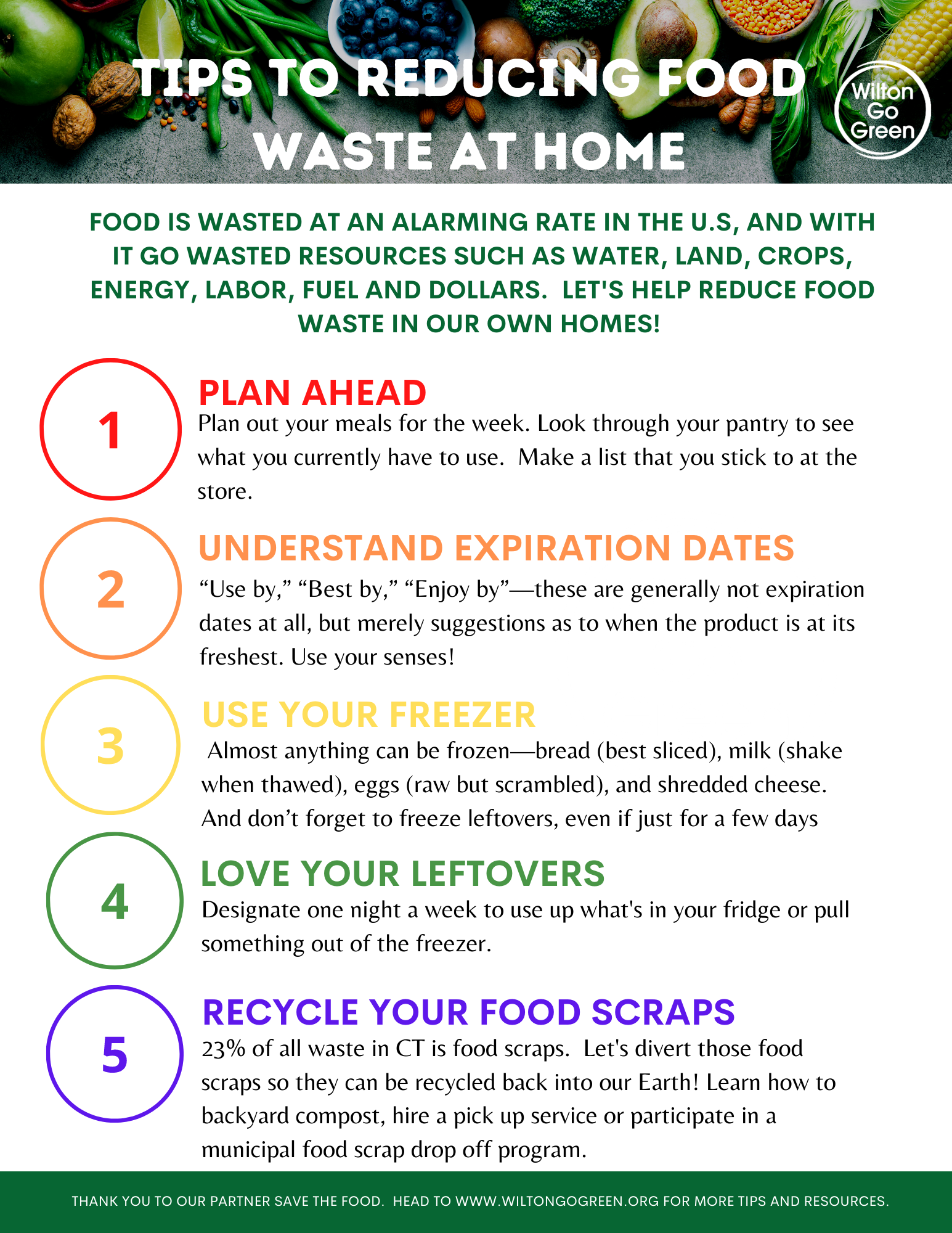
Download Wilton Go Green's 1 page
flyer to put up on your fridge to remind you of some of these simple steps.
FOOD RESCUE
The second tier of the EPA Food Recovery Hierarchy is “Feed Hungry People."
Here are some resources to help:
COMPOSTING
Diverting food scraps from the incinerator to composting:
- Increases soil moisture, combats erosion, supports essential soil bacteria, controls for weeds and stabilizes soil ph.
- Reduces the energy being used to incinerate trash by taking wet food out of the waste.
- Reduces the emissions that come from the incinerator and transportation of trash and ash.
- Reduces the toxic ash that is buried in landfills.
- Using locally sourced compost can replace the need for chemical fertilizers.
BACKYARD COMPOSTING
Check out these resources:
- DOWNLOAD Wilton Go Green's 2 page “Backyard Composting 101" flyer with how to get started and FAQs
- Wilton Go Green Home Composting webinar
- Wilton Go Green Home Composting Facebook Live event
- Composting in Your Backyard
- EPA Composting at Home
- Composting for Beginners
- Compost Foundation
- The Organic Composting Handbook
- Download directions to build a two bin system or upcycle wood pallets.
- Home composting with a standing plastic bin
RESIDENTIAL PICK UP AND MUNICIPAL DROP OFF
MUNICIPAL DROP OFF PROGRAMS
Wilton launched their town food scrap recycling program in January 2023. Learn more about the program and how to sign up HERE.
Check with your local town Department of Public Works to see if your town has a food scrap collection program.
RESIDENTIAL PICK UP SERVICES
Residents can hire a third party hauler to pick up your food scraps from your home and transport them to a composting facility. Residential pick up services accept ALL food scraps. Below is a list of companies in Connecticut.


